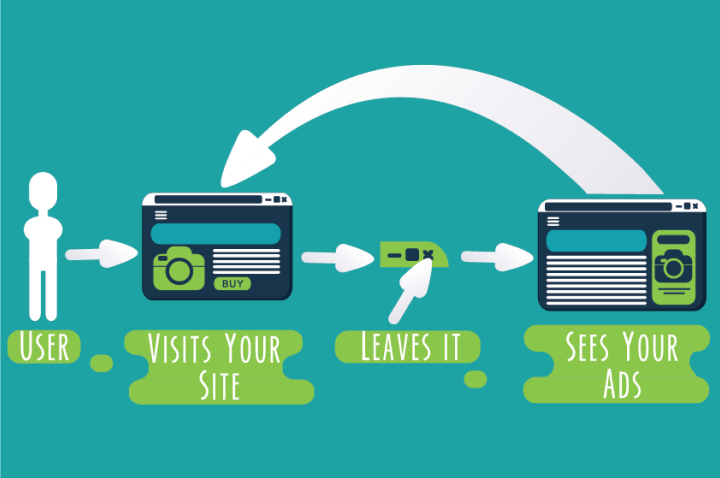Leads are like potential customers showing interest in your business. But often, they don’t make an immediate purchase. This is where the power of retargeting comes in.
Imagine having a second chance to connect with those leads who visited your website or engaged with your content. Retargeting uses clever ads to remind them of your offerings, gently nudging them toward making a purchase. In this guide, we’ll explore how this strategy can boost your conversions and turn those leads into loyal customers.
What is Retargeting in Digital Marketing
Retargeting, also known as remarketing, is a potent digital marketing strategy that re-engages users who previously interacted with your website or online content but didn’t complete desired actions like making a purchase. It operates on the principle that familiarizing users with your brand multiple times increases the likelihood of conversion.
The process involves placing tracking pixels or cookies in users’ browsers when they visit your site, allowing you to monitor their online activities. By segmenting users based on their behavior, like cart abandonment or page visits, tailored ads are then crafted to cater to their interests. These ads are displayed on various platforms as users continue to browse the web, subtly reminding them of their initial interest. The persistent exposure encourages users to return and complete the desired action, effectively converting leads into customers.
Why is Retargeting so powerful?
Retargeting wields exceptional power due to its capability to recapture the attention of potential customers who’ve already expressed interest in your offerings. This potency emanates from several factors:
- Precision Targeting: It hones in on users familiar with your brand, increasing the chances of conversions through focused outreach.
- Reminder Effect: By showcasing tailored ads, retargeting rekindles users’ interest, reminding them of products or services they considered.
- Personalization: Customized ads based on user behavior foster a sense of connection, heightening engagement and conversion likelihood.
- Multi-Touchpoint Impact: Consumer behavior often demands multiple interactions before converting, and retargeting provides these crucial touchpoints.
- Efficiency: Budgets are optimized as retargeting concentrates on warm leads, offering a cost-effective way to boost conversions.
- Ad Fatigue Mitigation: Control over ad frequency avoids overwhelming users and potential negative associations.
- Data-Driven Optimization: Conversion tracking allows continuous campaign enhancement based on performance analysis.
How to use Retargeting to Increase Conversion Rate?
Retargeting is a powerful strategy to enhance conversion rates by re-engaging potential customers who have previously interacted with your brand. To utilize it effectively:
-
Setting up Retargeting Campaigns
To initiate retargeting campaigns, install tracking pixels on your website via platforms like Google Ads, Facebook, or other ad networks. These pixels track user activity and enable you to create custom audiences based on specific interactions, such as page visits or abandoned carts. This foundational step is crucial for building targeted retargeting campaigns.
-
Creating Effective Retargeting Ads
Craft compelling retargeting ads that resonate with your audience. Use visually appealing imagery, concise yet persuasive copy, and a strong call to action. Address their pain points and showcase the value your products or services provide. Consider dynamic ads that display the exact products users viewed, reinforcing their interest.
-
Targeting the Right Audience
Segment your audience based on their behavior. Tailor retargeting ads to different segments, addressing their unique needs and preferences. For instance, show special offers to those who abandoned their shopping carts or highlight complementary products to those who made a purchase.
-
Measuring and Optimizing Retargeting Campaign Performance
Regularly monitor key performance indicators (KPIs) such as click-through rates, conversion rates, and return on ad spend. Analyze which ads and audience segments are performing best and allocate more resources accordingly. Experiment with ad variations, landing pages, and frequency capping to fine-tune your campaigns for optimal results.
-
Combining Retargeting with Other Marketing Strategies
Integrate retargeting with broader marketing approaches. Align retargeting with email marketing by sending personalized follow-up emails to retargeted users. Employ content marketing to provide valuable information that reinforces their interest. Utilize social media to amplify retargeting efforts and engage users across platforms. This cohesive strategy enhances the overall customer experience and maximizes conversion opportunities.
Challenges and Solutions for Retargeting
Retargeting is a valuable strategy, but it comes with its share of challenges that marketers must navigate to achieve successful outcomes.
-
Ad Fatigue
Ad fatigue occurs when users are exposed to the same retargeting ads too frequently, leading to decreased engagement and potential annoyance.
Solution: To combat ad fatigue, diversify your ad creatives and rotate them regularly. Develop a variety of ad formats, such as carousel ads, video ads, and dynamic ads that showcase different products. Implement frequency capping to limit the number of times an individual sees the same ad. This approach keeps your retargeting efforts fresh and prevents users from becoming desensitized to your messaging.
-
Poor Targeting
Displaying retargeting ads to irrelevant or disinterested audiences can result in wasted ad spend and low conversion rates.
Solution: Refine your targeting strategies by using behavioral and demographic data. Segment audiences based on their past interactions, preferences, and browsing history. Leverage dynamic retargeting to display products or services that users have shown interest in. Regularly update your custom audiences to ensure they accurately reflect the most relevant users, thus increasing the chances of engagement and conversions.
-
Privacy Concerns
With increasing concerns over data privacy, retargeting campaigns must be conducted while respecting users’ privacy preferences.
Solution: Implement robust data protection practices and comply with relevant privacy regulations such as GDPR or CCPA. Clearly communicate your data usage policies and provide users with opt-out options. Consider using first-party data obtained directly from your website visitors, which is often considered more trustworthy and aligned with privacy standards.
-
High Costs
Retargeting campaigns can become expensive, particularly if not optimized properly, leading to a negative impact on return on ad spend (ROAS).
Solution: Optimize your budget allocation by focusing on high-performing segments and ads. Continuously monitor the performance of your campaigns and adjust bids based on the conversion rates of different segments. A/B test ad variations and landing pages to identify the most cost-effective combinations. Consider setting up bid caps to prevent overspending on individual clicks and prioritize audiences with a higher likelihood of conversion.
-
Complex Setup
The technical setup of retargeting campaigns across various platforms can be daunting, especially for marketers unfamiliar with the process.
Solution: Use tools and platforms that simplify the retargeting setup process. Many ad networks offer user-friendly interfaces for creating and managing retargeting campaigns. Alternatively, consider hiring experts or agencies with experience in retargeting to ensure proper implementation. Utilize resources such as online tutorials, documentation, and customer support provided by ad platforms to streamline the setup process.
Conclusion
Ending with strategic finesse, retargeting propels brands into tailored marketing frontiers. Amidst challenges like ad fatigue and costs, adopting diverse ad formats and refining targeting methods ignites engagement. With data privacy concerns addressed through transparent policies, trust blossoms. Complex setups find solace in user-friendly platforms and expert guidance. As the journey concludes, retargeting stands as a testament to perseverance, delivering a mosaic of captivating ads, and forging customer relationships that transcend digital boundaries and propel businesses toward resounding success. At 1702 we have achieved some great numbers for our client through our PPC and SMM services.

